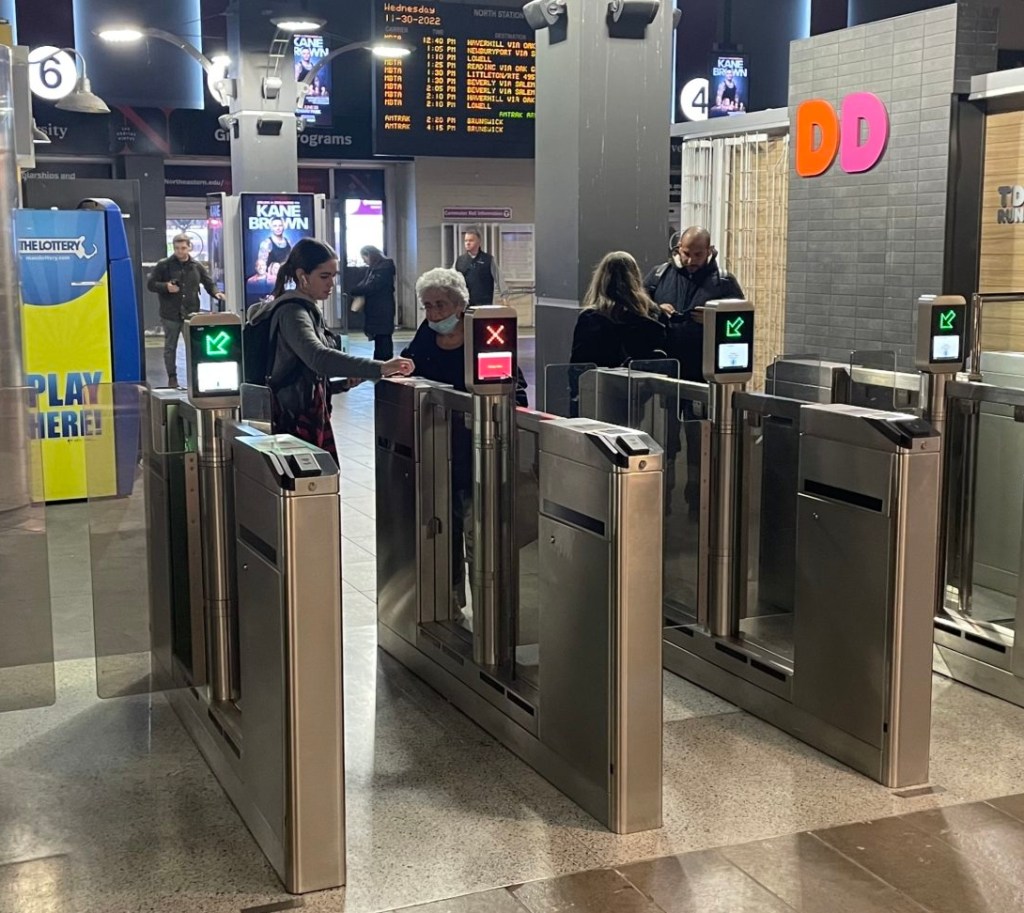MBTA OFFICIALS SAY fare collection efforts are being stepped up on the commuter rail system, but the loss of revenue remains a problem, with a quarter of fares not being collected on trains operating out of South Station.
MBTA General Manager Phillip Eng told the MBTA board of directors on Thursday that Keolis, the T’s commuter rail operator, is prodding conductors to do a better job of verifying that passengers have paid for their rides. He said conductor scans of mTickets, the primary ticket for riding the commuter rail system, rose from 171,669 in September 2023 to 517,864 last month, an increase of more than 200 percent.
Transportation Secretary Monica Tibbits-Nutt pressed Eng on the huge increase in mTicket scans, asking how much money the T has lost in the past by people riding the commuter rail for free.
David Churella, the T’s senior manager of fare policy and analysis, cautioned that the increase in scans doesn’t automatically mean fares previously had been going uncollected. He said conductors in the past may have been visually confirming the activation of a ticket rather than confirming it with an electronic scan.
Churela said a comparison of mTicket activations at North Station, where passengers must pass through fare gates to reach their trains, to activations on commuter rail trains operating out of South Station, where no gates are installed, suggests a large amount of fare revenue is going uncollected.
“Based off that experiment, we estimate that at least 25 percent of south side fares are not being collected and similar gating on the south side would have a similar impact on that portion of the network,” he said.
“That’s a lot – 25 percent,” Tibbits-Nutt said. “That’s a really big loss of revenue.”
Eng said fare gates have not been installed at South Station yet because of ongoing construction of a building being constructed in the air rights above the station, but he is exploring the possibility of installing temporary gates there.
Fare gates at South Station and Back Bay Station have been talked about for years. In April 2019, officials estimated the T was losing $10 million to $20 million a year from commuter rail fare evasion, or about 4 to 8 percent of total revenue. They set a target of reducing fare evasion to the industry standard of 3 percent.
Tibbits-Nutt said poor fare collection continues to be one of the leading consumer complaints she receives. T board member Chanda Smart said she received a number of calls just in the past week that fares were not being collected on the Fairmount Line, which is on the south side of the commuter rail system.
Eng said more money is being collected, but more can be done. “We have improved our fare collection on the commuter rail,” he said.
The general manager said employees of Keolis are monitoring conductors to make sure they are collecting fares. “It’s down to a handful of employees who they’re still working on,” he said.
Eng also suggested fare collection may also be a problem on the Green Line. He said 16 “fare engagement representatives” have been hired to make sure riders are tapping on to gain access to subways and buses. The workers have only been on the job a short time and performing mostly an educational role, yet Eng said T officials have noticed fare collections have increased about 35 percent when the representatives are at a station.
MBTA fares in general are fairly low. Fare revenues totaled $672.7 million in fiscal 2019 prior to Covid and accounted for 31 percent of operating revenue. Today fares total $403 million and represent about 15 percent operating revenue.
The last fare increase at the T was in 2019. At the time, the average trip on the T cost $1.92. Churela said the average trip cost is now down to $1.72 even though inflation has increased 23 percent over that period.
Ridership appears to be trending in the right direction. Eng said a comparison of September 2024 to September 2023 showed ridership up 4 percent on subway, 5 percent on bus, 6 percent on paratransit, 13 percent on ferry, and 22 percent on commuter rail.
Eng said he was encouraged by the increase, particularly given the many diversions that have taken place this year as the T has shut down subway lines to make track and signal repairs that are expected to eliminate all slow zones by the end of the year. Eng said he hopes ridership will rebound as the service improves. “At the end of the day, this is the key,” he said.
The post MBTA estimates 25% of south-side commuter rail fares not being collected appeared first on CommonWealth Beacon.

